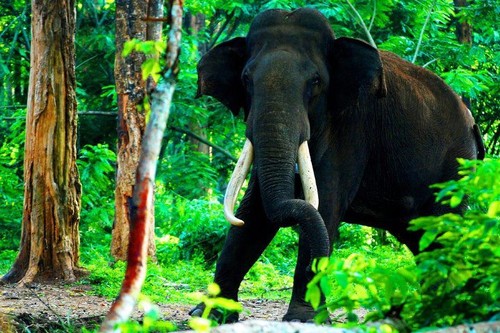It was around 6 in the evening, and we had just had a long trek in the forests of Wayanad, the beautiful green paradise, nestled in the mountains of Western Ghats, Kerala. We were in a Jeep- my dad, few guards, and myself. The Jeep was designed for those bumpy rides, very uncomfortable, but you get used to it and even begin to like it after a little while. I was hungry, growing impatient, and bored by the monotonous ride in the dark, so I started counting the number of hills we climbed. Each hill represented a milestone closer to food and rest. Just when we were about to reach the top of a hill, we were faced with this large dark figure before us, and it was moving. Before we knew it, it came closer and closer. The guards started shouting in Malayalam, “Quick! Reverse the jeep! There’s a lone wild elephant”. Apparently elephants aren’t a threat when they are in their herd, but when they are alone, especially if it’s a male elephant, they can be extremely dangerous, capable of overthrowing Jeeps and killing people. Reversing down a hill was hard enough, but it was even worse because we could see very little in the dark. I could literally hear the elephant stomping, chasing us. He chased us for about a mile, and then walked away. An experience I will never forget, and lived to tell!
“If we want children to flourish, we need to give them time to connect with nature and love the Earth before we ask them to save it” (David Sobel, in ‘Beyond Ecophobia’)
No one taught me about Stinging Nettles or Mimosa Pudicas, I knew exactly what they were capable of. I learned about fern spores through the white and golden tattoos they formed on skin, long before I had a lesson on Pteridophytes in my Botany class. Before someone could tell me about the lifecycle of the frog, I discovered it myself when by mistake caught a tadpole in a glass bowl from a pond, thinking it was a fish and it started growing legs!
“It is necessary to place the soul of the child in contact with creation, in order that he may lay up for himself a treasure from the directly educating forces of living nature” (Maria Montessori, in ‘The Montessori Method’)
Sid Mohandas is a Montessori practitioner from the UK. He received his training at Montessori Centre International (MCI), London.

